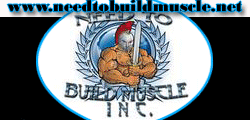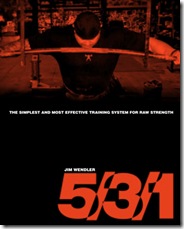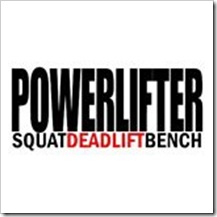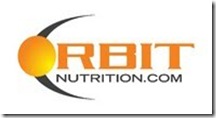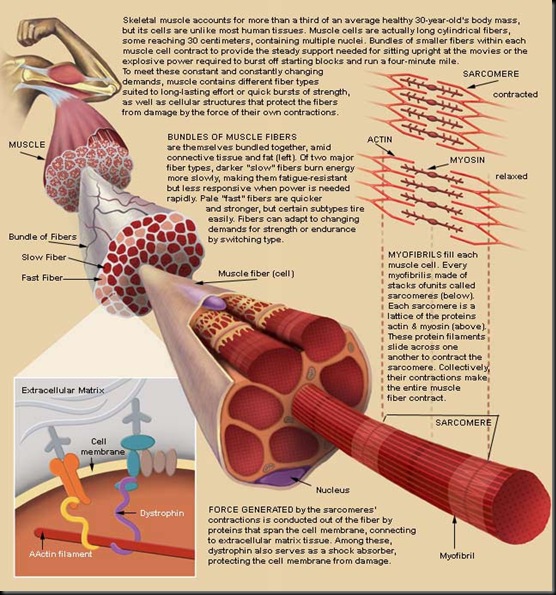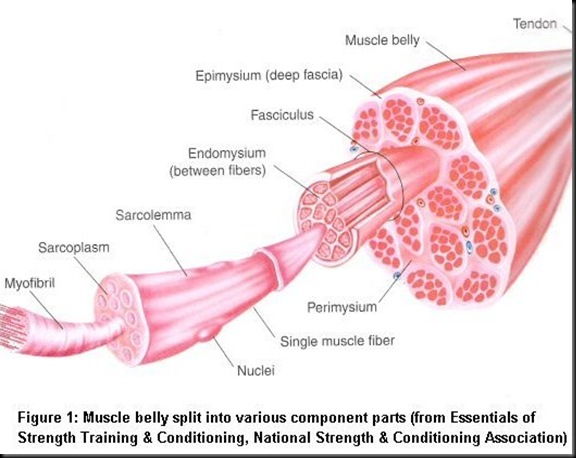By Jim Wendler
For EliteFTS
I don’t know how many questions we’ve gotten regarding how to train certain weak points. Of course, almost every question is in regards to a weak muscle group or a certain portion of a lift. For the past couple of months Dave Tate and I have gone over this phenomenon and have found out that lifters need to take a step back and evaluate weak points on another level. Instead of classifying weak points as muscle groups or sticking points, it needs to be approached differently. I need to point out that this is a very rudimentary design and needs to be taken to another level. But, at the very least, this will give you a better understanding of how to evaluate your training, how to periodize (plan) your training and how to set up your training schedule to best accommodate your goals, strengths and weaknesses. Remember that if you are trying to improve them all at the same time, you are never going to get anywhere. In fact this is called overtraining! Also, remember that not everything needs to be a “10” or be an ultimate priority.
First, take the 6 areas of training (listed below) and think about how important they are to being a powerlifter. Rate them on a scale of 1-10. This is going to be up to you and how you view them. For example, GPP for a powerlifter would consist of conditioning, mobility and flexibility. A powerlifter would have enough conditioning to perform enough volume during his workouts to achieve his goals. So a powerlifter would need some conditioning but not a ton. He would also need enough mobility to put his body in proper position, but he wouldn’t need to be a gymnast. So understand that all areas are important, but not everything is going to be a 10. The best example of this happened to me a couple of years ago. Like many of you, I thought conditioning was of the utmost importance in training so I did a lot of work in this area. I pulled the sled, did a ton of warm-up and cool down work. While I could do this all day, I couldn’t lift a damn thing. This is much like many writers who call themselves “strength” coaches. The only difference is when I was “weak” I still could bench over 500lbs. But, I digress. Anyway, I took my conditioning level (remember this is only a part of G.P.P. despite what others may think) to a much higher level than it needed to be. When this happened, other levels began to drop off because I was not focusing my energy in the right place. I was weak as hell, but could drag a sled forever. Great if you want to be a professional sled dragger but awful if you are a powerlifter.
Areas of Training to Evaluate (Powerlifting)
* Speed
* Strength
* Hypertrophy
* Technique
* Mental
* General Physical Preparedness
Now take the above and evaluate where you are numerically 1-10; 1 being something that would be so poor that you are embarrassed, 10 being something that you excel at and are the envy of in the strength and conditioning world. This is not the time to be hyper-critical (for example, many people will say, “I suck at everything” and while this may be somewhat true, there are things that even the weakest people are good at) but you must be honest with yourself. If you can, have a trusted training partner or partners evaluate yourself. If they are true training partners, then they will be honest.
Example
So I’m going to use myself as an example so that everyone has an idea of how to do this;
Technique - This always needs improvement and is constantly being worked on. While this is always a priority, your training will always give you the chance to improve this. This is always going to be a priority of “10” (and can never really be perfect) and will always be important.
Mental – I’m not sure how to handle this or what you need to do if you are weak at this. Maybe go read some book or take some drugs. I’m fine in this area, so I don’t focus on this.
Speed – I rate the “speed” factor for a powerlifter as being about a 7 and I think that I am at the level. I do enough speed work to maintain this level and nothing more. Why? Because if I do more work, then I can’t fully concentrate on the areas that I need to improve.
(Absolute) Strength – I sucked at this for a long time and still need work. For a powerlifter I ranked this a 9. This is something I need to work on so this is a priority in my training.
Hypertrophy – I am fine in this area and do just enough to maintain my muscle mass and have no reasons to move up a weight class.
General Physical Preparedness – I suck at my conditioning and mobility, especially when I’m 280+. Because of this, I need to focus on keeping my conditioning and mobility at an acceptable level. I do not go crazy with this, but need to always keep my eye on this as it will drop off quickly.
Evaluation
So now that you see how I’ve ranked myself, let’s look at the areas that I need to improve and what needs to be maintained. I need to do just enough maintenance work to keep my speed and hypertrophy. I can’t let them drop off, but I do just enough to maintain their level. Some people may even need to let things drop off a bit. But very few people fall into this category, so don’t worry about that.
I don’t need to see a psychologist and I’m fine under pressure, of course if you think that being under a squat bar is pressure, then you probably have lived a pretty sheltered life.
Technique always needs to be improved and is addressed no matter what my physical weaknesses are and what my training is going to look like. So while I’m always looking to improve, I let it fall naturally within my training plan.
So that leaves me with strength and my conditioning/mobility. These two areas are what I need to concentrate on and will help guide me into setting up a program. So my training plan will consist of a lot of effort on max effort work and making sure my conditioning and mobility is where it needs to be. The other parts of my training will be maintained with the least amount of work possible. Read that last sentence and internalize it.
Once you do the above, now you can better map out a plan for your own training.
For those that think you suck at everything (you probably do if you actually think like that, by the way) all you have to do is prioritize. Remember when I asked you to take each factor and rate them as how you would feel would be the most important? Take your weaknesses and see which two are the most important. Now take those two and improve on them. This is how you prioritize your training.
By the way this can be done for every sport. Simply brainstorm and think of all the characteristics (physical and mental) that your sport would need. Then rate them by importance. For example, agility in powerlifting would be a “0”; for football (depending on position) would be an 8. Once you do that, rate your athletes’ and see how they measure up and create your programs based on their needs. Let’s say you’ve got Johnny Muscles, who is an offensive lineman who bench presses 455 and squats 675. But Mr. Muscles can’t side shuffle and trips over his own feet when he sleeps. He probably doesn’t need a lot of work in the weight room, but needs to improve his footwork.
This, readers of EFS, is what weak point training is all about.
Questions to help you:
Speed: - Do my sets at ~60% of my max move explosively and effortlessly?
Strength – Do I have the ability to grind out maximal weight for 3-5 seconds?
Hypertrophy – Do I have the necessary hypertrophy to maintain leverage in my lifts and compete in the weight class that I desire?
Technique- Is my technique consistent and dead-on? No one will ever be 100% but do you feel comfortable using your technique as a guideline for other lifters?
Mental – Do I feel confident in my training and my goals? Do I have a positive attitude in regards to my abilities and my training?
General Physical Preparedness – Conditioning: Am I conditioned enough so that my training and workouts have enough volume and intensity for me to keep progressing? Mobility: Do I have enough joint mobility so that my body can perform efficiently? Is my body able to go through the correct range of motion during the lifts so that I do not get injured?
These are a few basic questions that should be asked and addressed when outlining your training program. Basically, you need to find out which of these 6 things you are weakest in and address it. Remember that abilities can be maintained through concurrent training, but not everything can be raised. There must be emphasis on one or even two areas, but anymore than that and you are asking for injuries and fatigue.
Now a plan must be mapped out for you to raise your level of training in the weak area. Remember that some things may take as little as 2 weeks (conditioning) to fix or more than 6 months (straining ability). Some things may be a life long battle (mental).


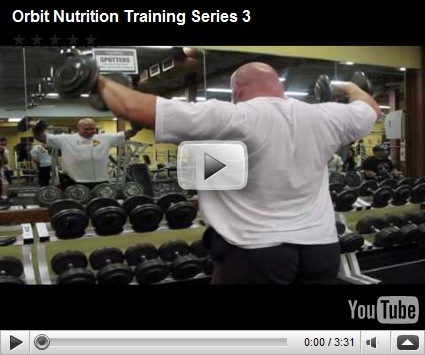
![orbit_logo_v2_print300dpi[1] orbit_logo_v2_print300dpi[1]](http://lh3.ggpht.com/_AAvE-mEhIkg/S2GSPSUUcdI/AAAAAAAAAGU/E9AjN6O34DM/orbit_logo_v2_print300dpi%5B1%5D%5B4%5D.png?imgmax=800)

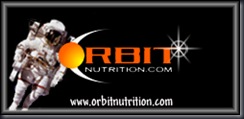


 Of course, Eli's nearly 30-year journey hasn't exactly been an easy one. Not only is water virtually scarce, and survival depends on whatever he can find to eat (a hairless sphinx is dinner in one particular scene), but the world has become increasingly savage. There's nothing resembling civilization, no law, and gangs of violent hooligans who wouldn't think twice about killing a man for the things people used to take for granted—shoes, a drink of water, a nice warm blanket.
Of course, Eli's nearly 30-year journey hasn't exactly been an easy one. Not only is water virtually scarce, and survival depends on whatever he can find to eat (a hairless sphinx is dinner in one particular scene), but the world has become increasingly savage. There's nothing resembling civilization, no law, and gangs of violent hooligans who wouldn't think twice about killing a man for the things people used to take for granted—shoes, a drink of water, a nice warm blanket.  Redemption in the Trenches
Redemption in the Trenches  Opening wide in theaters on January 15, 2010, The Book of Elistars Denzel Washington, Gary Oldman, Mila Kunis, Ray Stevenson, Jennifer Beals and is rated R for some brutal violence and language. For more information, please visit the official Web site of
Opening wide in theaters on January 15, 2010, The Book of Elistars Denzel Washington, Gary Oldman, Mila Kunis, Ray Stevenson, Jennifer Beals and is rated R for some brutal violence and language. For more information, please visit the official Web site of 





